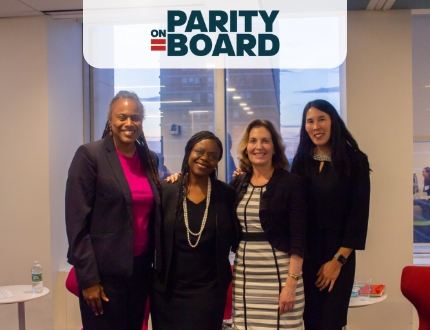
May 29, 2019
YW Boston launches coalition at Parity on Board: Achieving diversity on Massachusetts public boards
On Thursday, May 16th, YW Boston, in partnership with the Eos Foundation, held the event Parity on Board: Achieving diversity on Massachusetts public boards at Blue Cross Blue Shield of Massachusetts. The event was an opportunity to learn about the research conducted by the Eos Foundation on the gender leadership gap in Massachusetts and the advantages of having greater diversity serve our state. It also served as the launch of the Parity on Board coalition, which seeks to support An Act to ensure gender parity on public boards and commissions (H.2711/S.1878) in the Massachusetts legislature.
Thank you to each of our speakers who shared their knowledge about the importance of diversifying leadership in Massachusetts and how to go about it:
- Andrea Silbert, President, Eos Foundation (Presenter and Panelist)
- Beth Chandler, President and CEO, YW Boston (Moderator)
- Betty Francisco, General Counsel, Compass Working Capital, Co-Founder, Latina Circle and Amplify Latinx (Panelist)
- Donna Levin, Executive Director, Innovation and Entrepreneurship, WPI, Co-founder, Care.com (Panelist)
Keep reading to learn what each of our speakers recommended to diversify leadership:
1. Data shows that women, and especially women of color, are underrepresented in leadership.
We may know that Massachusetts has far to go to ensure that women have equal representation in leadership in Massachusetts’s organizations, boards, and commissions. However, we need to know what the data states in order to set goals and to help others see how large the power gap really is. Thankfully, the Eos Foundation’s Women’s Power Gap Initiative has a wealth of information on its website, providing statistics on female representation among Massachusetts CEOs, board chairs, and board members.
As the Women’s Power Gap data shows, women comprise 22% if CEOs, 34% of board chairs, and hold 39% of board seats in Massachusetts. Women of color hold just 2% of those CEO positions, 4% of board chair positions, and 6% of the board seats. The disparity is most stark on business and technology fields, and women are notably underrepresented on education boards, despite being over-represented among K-12 educators and childcare workers. As Andrea Silbert, it is important to study these top Massachusetts board and commissions, and look into their representation, “because they determine the future of our state.”
2. The lack of diversity is not a pipeline issue.
When asked about the myths organizations provide to why they are not diversifying, Donna Levin stated that she always runs into people saying “it is a pipeline issue,” or the belief that are simply no qualified women or people of color currently in the fields in which they are hiring. As she states, “people hide behind that myth” in order to let themselves off the hook for not diversifying their staff. Instead, these leaders need to expand their view of who is qualified for a given position.
If you do not think there are enough people of color or women in ‘the pipeline’, change the requirements you are looking for. As each of the panelists stated during the discussion, hiring managers need to reevaluate conditions for a job, such as having a master’s degree or many years of experience in a particular field. This opens up the field to many qualified professionals of all genders, races, and ethnicities.
[soliloquy id=”6882″]
3. Focus on diverse skills sets, not just diversity for diversity’s sake.
In her position as Co-Founder of Amplify Latinx, Betty Francisco has found that many people come to her asking that she recommend a Latinx person for a job, but with few other requirements. She’s found that this does not set up the applicants or the organization up for success, and can be off-putting to those making the recommendations. As she states, when people ask, “‘Can you recommend a Latina?’ That is like being asked ‘Can you recommend a white man?’ It doesn’t really make a lot of sense.”
She suggests that hiring managers ask themselves and their organizations “How can we position skills sets and experiences that we want?,” such as specifically looking for someone who speaks Spanish or has experience working in multicultural spaces. This is a more direct way to find top candidates and helps organizations engage ” in communities that can then help you build those networks.” By “being clear about the needs your organization has and why you need” them, organizations will stop thinking of needing diversity for diversity’s sake, and instead realize the value that a diverse staff brings to their work.
4. We must implement innovative systems and policies.
As Andrea Silbert pointed out during the event, people have been talking about diversifying leadership for decades, but we are still far from parity. Simply hoping for more equal representation on boards and commissions won’t happen overnight, so we must implement innovative systems and policies that will get us closer to the diversity we seek.
Andrea Silbert spoke of the importance of board chairs rotating often, leading to more opportunities for women and people of color to lead. To take a step closer to gender parity, boards can implement a policy ensuring that board chair positions will rotate between a man and a woman each term. Another policy, put into place by the Mass Technology Leadership Council, staggers the terms of a board’s co-chairs. This way, rather than focusing on finding someone who has all of the same experience that former chairs, they can appoint a co-chair who will be mentored and guided through the ins and outs of their position by the more senior board chair. They will then pass this knowledge on to the next appointed board chair. This policy allows organizations to consider a wide, more diverse pool of board chair applicants.
An Act to ensure gender parity on public boards and commissions (H.2711/S.1878) seeks to implement the creative solution of ensuring that all Massachusetts public boards and commissions “broadly reflect the general public of the Commonwealth.” In so doing, these bodies will include “persons of different backgrounds, abilities, interests, and opinions including ethnic minorities and women and shall have not less than 50% women board members or commissioners.”
Join us in our pursuit of #ParityOnBoard! We need your partnership to ensure diversity on public boards and commissions. Learn more about the legislation and the growing Parity on Board coalition by checking out our fact sheet (below) and signing up for updates at www.parityonboard.org.
_
About YW Boston
As the first YWCA in the nation, YW Boston has been at the forefront of advancing equity for over 150 years. Through our three programs—Dialogues, LeadBoston, and our youth programming—as well as our advocacy work, we help individuals and organizations create more inclusive environments where women, people of color, and especially women of color can succeed.

